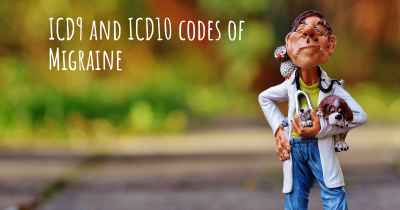Which are the symptoms of Migraine?
See the worst symptoms of affected by Migraine here

Migraine is a neurological disorder characterized by recurrent, intense headaches that can cause significant pain and discomfort. These headaches are often accompanied by a variety of symptoms that can vary from person to person. While the exact cause of migraines is still not fully understood, it is believed to involve a combination of genetic and environmental factors.
The primary symptom of a migraine is a severe headache that is typically unilateral (affecting one side of the head), although it can also be bilateral (affecting both sides). The pain is often described as throbbing or pulsating and can last anywhere from a few hours to several days. Migraine headaches are usually aggravated by physical activity and can be so debilitating that they interfere with daily activities.
In addition to the headache, migraine sufferers may experience various other symptoms before, during, or after the headache phase. These symptoms are collectively known as the prodrome, aura, and postdrome phases.
The prodrome phase occurs hours to days before the onset of the headache and is characterized by subtle changes in mood, behavior, or physical sensations. Common prodrome symptoms include:
- Changes in appetite, such as food cravings or loss of appetite
- Increased thirst or fluid retention
- Frequent yawning
- Constipation or diarrhea
- Neck stiffness
- Increased urination
- Mood swings, irritability, or depression
- Difficulty concentrating or experiencing brain fog
- Increased sensitivity to light, sound, or smells
The aura phase occurs in about one-fourth of migraine sufferers and typically lasts for about 20 minutes to an hour. It involves temporary neurological disturbances that can affect vision, sensation, and speech. Not everyone experiences aura, and it can vary in intensity and duration. Common aura symptoms include:
- Visual disturbances, such as seeing flashing lights, zigzag lines, or blind spots
- Tingling or numbness in the face or extremities
- Difficulty speaking or finding the right words
- Temporary loss of vision or double vision
- Confusion or disorientation
- Uncontrollable jerking movements or muscle weakness
The headache phase is the most debilitating and can last anywhere from a few hours to several days. Along with the severe headache, individuals may experience:
- Nausea or vomiting
- Sensitivity to light (photophobia) and sound (phonophobia)
- Dizziness or vertigo
- Blurred vision
- Lightheadedness
- Scalp tenderness
- Increased pain with physical activity
The postdrome phase occurs after the headache phase and is often referred to as the "migraine hangover." During this phase, individuals may feel exhausted, drained, and experience a range of symptoms, including:
- Feeling mentally foggy or confused
- Extreme fatigue or weakness
- Moodiness or irritability
- Headache resolution with a dull, lingering pain
- Sensitivity to light and sound
- Decreased appetite
- Generalized body aches
It is important to note that not all migraine sufferers experience all of these symptoms, and the severity and frequency of symptoms can vary greatly between individuals. Some people may only experience the headache phase, while others may go through all the phases. Additionally, triggers such as stress, hormonal changes, certain foods, lack of sleep, and environmental factors can influence the occurrence and intensity of migraines.
If you suspect you may be experiencing migraines, it is crucial to consult with a healthcare professional for an accurate diagnosis and appropriate treatment options. Migraines can significantly impact a person's quality of life, but with proper management and lifestyle modifications, individuals can find relief and better control over their symptoms.
Posted May 11, 2017 by Tona 1350
Posted Sep 28, 2017 by Catherine 2050
Sensitivity to light, sound, and sometimes smells.
Blurred or impaired vision in the eye accoiated with the pain.
Posted Jun 12, 2020 by Beth 1100
Posted Aug 21, 2021 by Debi 2500
The headache that comes after that is very intense and lasts quite long in my case. It is a squeezing pain in the temples and part of the neck from behind, going down the column.
Posted Mar 5, 2017 by Lauri 1072
Posted Nov 14, 2017 by Alejandro 2200








